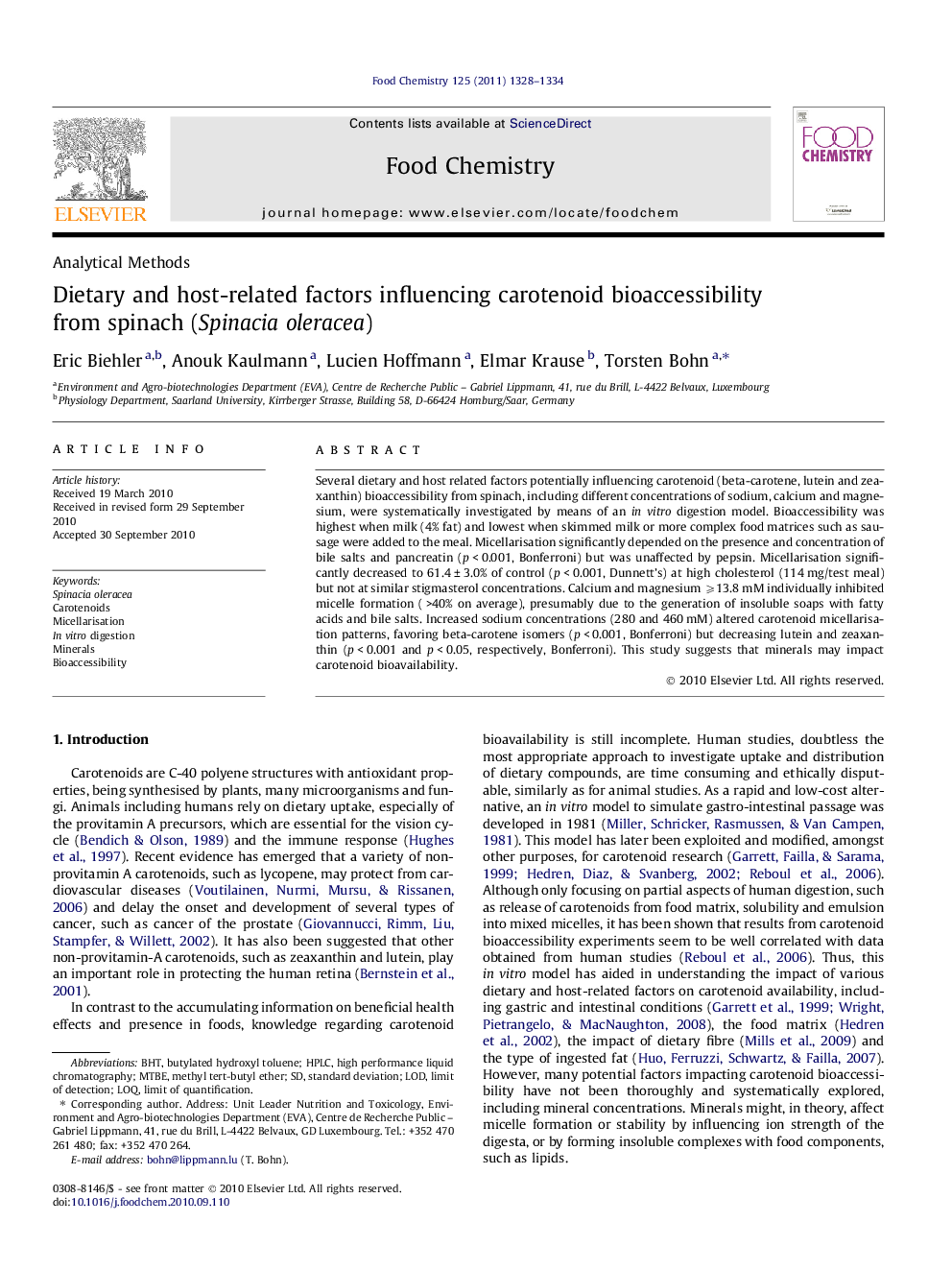| Article ID | Journal | Published Year | Pages | File Type |
|---|---|---|---|---|
| 1186493 | Food Chemistry | 2011 | 7 Pages |
Several dietary and host related factors potentially influencing carotenoid (beta-carotene, lutein and zeaxanthin) bioaccessibility from spinach, including different concentrations of sodium, calcium and magnesium, were systematically investigated by means of an in vitro digestion model. Bioaccessibility was highest when milk (4% fat) and lowest when skimmed milk or more complex food matrices such as sausage were added to the meal. Micellarisation significantly depended on the presence and concentration of bile salts and pancreatin (p < 0.001, Bonferroni) but was unaffected by pepsin. Micellarisation significantly decreased to 61.4 ± 3.0% of control (p < 0.001, Dunnett’s) at high cholesterol (114 mg/test meal) but not at similar stigmasterol concentrations. Calcium and magnesium ⩾13.8 mM individually inhibited micelle formation ( >40% on average), presumably due to the generation of insoluble soaps with fatty acids and bile salts. Increased sodium concentrations (280 and 460 mM) altered carotenoid micellarisation patterns, favoring beta-carotene isomers (p < 0.001, Bonferroni) but decreasing lutein and zeaxanthin (p < 0.001 and p < 0.05, respectively, Bonferroni). This study suggests that minerals may impact carotenoid bioavailability.
Research highlights►Carotenoid micellarisation significantly impacted by bile salts and pancreatin. ►Cholesterol, not stigmasterol significantly decreased carotenoid micellarisation. ►Ca and Mg ⩾ 13.8 mM individually inhibited carotenoid micelle formation by >40%. ►High Na concentrations (280 mM) altered carotenoid micellarisation patterns. ►Impact of minerals on carotenoid bioaccessibility suggested for first time.
